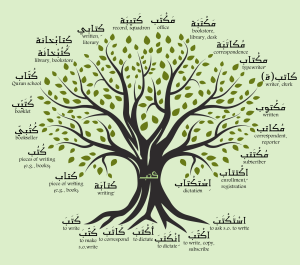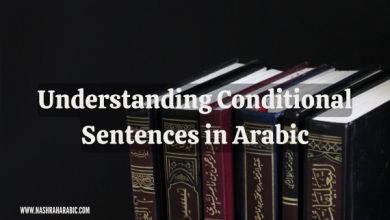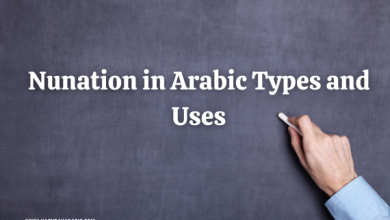Arabic is a beautiful and rich language with a unique structure that can seem daunting to learners. One of the most intriguing aspects of Arabic grammar is its verb forms. Understanding Arabic verb forms is crucial to mastering the language. In this article, we’ll explore these forms in detail, making them easier to grasp and apply.
Introduction
Learning Arabic verb forms is like uncovering the layers of an onion. Each layer reveals new meanings and nuances that enrich your understanding of the language. Let’s peel back these layers together and delve into the fascinating world of Arabic verb forms.
The Root System
Arabic verbs are built on a root system, typically consisting of three consonants. This root conveys the core meaning of the word, and various patterns (forms) are applied to modify this meaning. For example, the root “كتب” (k-t-b) relates to writing and can transform into numerous related words.
Form I (فعل)
Form I is the most basic and general form, representing the simple or default action related to the root. For example, from “كتب” (k-t-b):
- كتب (kataba) – He wrote
- جلس (jalasa) – He sat
Form II (فعّل)
Form II often indicates a causative or intensive action. It involves doubling the middle consonant of the root. For example:
- درّس (darrasa) – He taught (causative of learning)
- كسّر (kassara) – He smashed (intensive of breaking)
Form III (فاعل)
Form III usually implies a reciprocal action or an attempt to perform the action. It often involves interactions or attempts. For example:
- كاتب (kataba) – He corresponded (reciprocal of writing)
- شاهد (shaahada) – He witnessed (attempt or effort to see)
Form IV (أفعل)
Form IV typically denotes a causative or declarative action. It is formed by adding an initial ‘أ’ to the root. For example:
- أكتب (aktaba) – He dictated (causative of writing)
- أعلم (a’lama) – He informed (declarative of knowing)
Form V (تفعّل)
Form V is often the reflexive or passive version of Form II. It involves adding the prefix “ت” and doubling the middle consonant. For example:
- تدرّس (tadarasa) – He studied intensively (reflexive of teaching)
- تكسّر (takassara) – It was smashed (passive intensive of breaking)
Form VI (تفاعل)
Form VI usually indicates reflexive, reciprocal, or mutual actions and is the reflexive of Form III. For example:
- تكاتب (takātaba) – They corresponded with each other
- تشارك (tashāraka) – They participated (together)
Form VII (انفعل)
Form VII indicates passive or reflexive action. It is formed by adding the prefix “ان” to the root. For example:
- انكتب (inkataba) – It was written
- انكسر (inkasara) – It was broken
Form VIII (افتعل)
Form VIII often implies reflexive or causative actions and includes an inserted ‘ت’. For example:
- اجتمع (ijtama’a) – He gathered (reflexive of gathering)
- اختار (ikhtāra) – He chose (causative of choosing)
Form IX (افعلّ)
Form IX is quite rare and is typically used to denote colors and physical defects. It involves doubling the final consonant. For example:
- احمرّ (ihmarr) – It turned red
- اعورّ (a’warra) – He became one-eyed
Form X (استفعل)
Form X generally implies seeking or asking for the action related to the root. It is formed by adding “است” to the beginning. For example:
- استكتب (istaktaba) – He asked someone to write
- استعلم (ista’lama) – He inquired or asked for information
Practical Tips for Learning
- Practice Regularly: Consistent practice helps solidify your understanding of verb forms.
- Use Mnemonics: Mnemonics can aid in memorizing the different forms and their uses.
- Engage with Native Speakers: Conversing with native speakers can provide practical context.
- Use Learning Apps: Apps like Memrise or Anki can offer spaced repetition for better retention.
- Watch Arabic Media: Immersing yourself in Arabic media can help reinforce learning through exposure.
Conclusion
Mastering Arabic verb forms may seem like a daunting task, but breaking it down into manageable pieces makes it more approachable. By understanding each form and its nuances, you will greatly enhance your fluency and ability to express yourself in Arabic. Remember, language learning is a journey, and every step you take brings you closer to mastery.
FAQs
How many verb forms are there in Arabic?
There are ten primary verb forms in Arabic, each adding a different nuance to the root meaning.
Are all verb forms equally common?
No, some forms like Form I, Form II, and Form III are more commonly used than others like Form IX.
Can one verb root have all ten forms?
Not necessarily. While many roots can be extended into multiple forms, not all will have all ten.
How can I practice these verb forms?
Using flashcards, language apps, and practicing with native speakers are effective methods for practicing verb forms.
5. Is it necessary to learn all ten verb forms?
While it’s helpful, focusing on the most common forms first can make the learning process more manageable.






